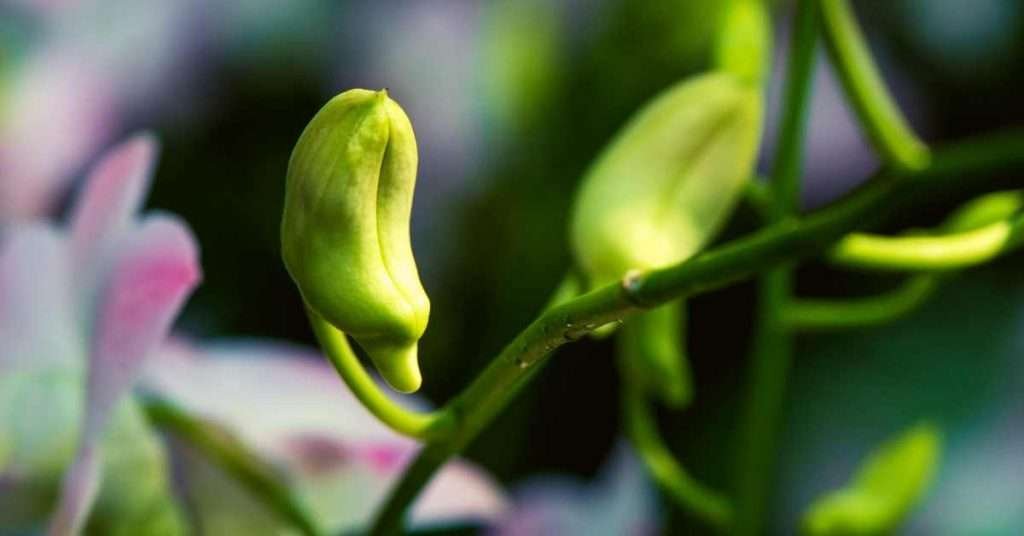The orchid—with its delicate petals and captivating colors—is a source of admiration for many gardeners.
Whether a novice or an experienced green thumb, orchids are known to inspire awe and appreciation among those who care for them.
But what’s one to do when even the most admired of plants won’t do what’s expected of it? In this blog post, we’ll discuss the issue of an orchid that is growing new leaves but not flowers.
Read on to learn more about the causes and possible remedies for this common orchid problem.
What is an Orchid?

Orchid (family Orchidaceae), with nearly 1,000 genera and over 25,000 species, is an appealing flowering plant found worldwide, particularly in humid tropical regions.
Typically, orchid flowers have three outer sepals, three inner petals, a single prominent column in the middle, and a large bottom petal called a lip or labellum. The flower shape is usually bilaterally symmetrical.
When cared for properly, orchid plants can live for several years and even re-flower when given enough attention.
They are also known for their unique ability to adapt to the environment and the climate, making them a perfect choice for multiple environments.
Orchid plants are also renowned for their beauty and aesthetic. They bring a unique and exotic feel to homes, gardens, and commercial spaces.
As more and more people discover the beauty of these plants, the likelihood of these plants being around for many more generations is a sure thing.
Reasons an Orchid Might Not Be Flowering

1. Lack of Sunlight:
Orchid flowers thrive in bright, indirect sunlight. If your orchid is not receiving enough sunlight, it may not get enough energy to bloom. Make sure to place your orchid in a sunny spot, but avoid placing it in direct sunlight, as this may cause the leaves to burn.
2. Too Little Fertilizer:
Fertilizer is essential for orchids to generate the nutrients needed for them to bloom.
A fertilizer explicitly made for orchids is required for optimal flowering. If your orchid is not regularly fertilized, it may have trouble blooming.
3. Wrong Season:
Orchids are susceptible to changes in temperature and light. In most cases, orchids will bloom in response to natural seasonal changes, such as during the warmer spring months. If the external conditions are too extreme for your orchid, it will not flower.
4. Not Enough Water:
While orchids are generally sensitive to overwatering, they do need an adequate amount of water to thrive. Ensure to water your orchid evenly; orchids generally do best when watered lightly once a week.
Troubleshooting Ongoing Problems of Non-blooming Orchids
Troubleshooting ongoing problems of non-blooming orchids can be a challenging task. But with the right tools and techniques, it is possible to keep your beloved orchid blooming.

Below are some tips for solving problems related to non-blooming orchids.
1. Repotting:
Repotting an orchid is essential for keeping it healthy and blooming.
Older plants are repotted every three to five years. When repotting, check the roots, remove soft, mushy, dead, or dying roots, and trim any dead or discolored leaves.
Use a suitable potting mix; remember to provide adequate drainage by adding foam pieces to the pot’s bottom.
2. Pest Control:
An infestation of pests can be detrimental to an orchid’s health and can often cause them to stop blooming. Treating an orchid’s problem with an insecticide or systemic pesticide is the best way to eliminate any current pests.
However, it is essential to follow all the instructions on the product’s label, as these pesticides can be toxic to humans, pets, and other plants.

3. Discarding Dead Leaves:
Dead leaves that remain on orchids can rot instead of decomposing and cause the plant to become sick.
Removing dead leaves will help keep the orchid healthy and promote blooming. It is important to note that when trimming out dead leaves, it is essential to avoid trimming growth points along the stem.
Following these tips meticulously can help keep orchids blooming and healthy. Remember that orchid care requires diligence and patience, but the reward of blooming flowers will be worth the effort.
Conclusion
There are a multitude of reasons an orchid might not be flowering, from inadequate lighting and temperature conditions to watering too frequently or too little and poor nutrition.
To ensure a successful flowering season, the orchid should be kept in optimum conditions, have adequate nutrition, and be properly watered.

With the proper care, an orchid can provide an abundance of colorful flowers for years to come.






